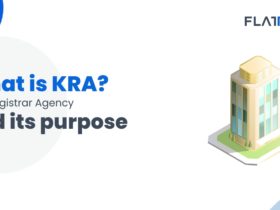A Demat account, is a brief for “dematerialized account,” is an electronic account used to hold and manage securities in digital form. It eliminates the need for physical certificates, making trading and investing in stocks, bonds, mutual funds, and other financial instruments more convenient and secure.
Importance of Demat account for Trading
A Demat account plays a crucial role in modern financial markets and offers several benefits that highlight its importance:
Safety and Security:
- Eliminates Risks: Holding securities in electronic form reduces the risk of theft, loss, forgery, or damage that is associated with physical certificates.
- Secure Transactions: Transactions are more secure with stringent verification and authorization processes.
Convenience:
- Easy Management: Investors can easily manage their portfolio from anywhere with internet access, allowing for quick monitoring and trading.
- Reduced Paperwork: Digital storage means less paperwork, making the process of buying, selling, and transferring securities more straightforward.
Efficient Trading and Settlement:
- Faster Transactions: Transactions are processed quickly, often within a couple of days, due to the electronic settlement system.
- Instant Transfer: Immediate transfer of securities in case of buying or selling, enhancing liquidity.
Cost-Effective:
- Lower Costs: Reduces costs related to handling, storage, and transfer of physical certificates.
- Economies of Scale: Multiple securities can be managed in a single account, streamlining administrative expenses.
Corporate Benefits:
- Automatic Updates: Direct credit of dividends, interest, and bonus issues into the Demat account without manual intervention.
- Corporate Actions: Simplifies processes related to mergers, acquisitions, and other corporate actions.
Accessibility and Transparency:
- Real-Time Information: Investors can access real-time information about their holdings and transactions.
- Account Statements: Regular electronic statements provide a clear record of all transactions and holdings.
Regulatory Compliance:
- Mandatory for Trading: In many countries, having a Demat account is mandatory for trading in securities, ensuring regulatory compliance.
- KYC Norms: Ensures that investors comply with KYC (Know Your Customer) norms, promoting transparency and reducing fraud.
Enhanced Investment Opportunities:
- Wide Range of Securities: Facilitates investment in a wide range of financial instruments including equities, bonds, mutual funds, and ETFs.
- Seamless Integration: Easily integrates with trading accounts and bank accounts, providing a seamless investment experience.
Environmental Impact:
- Paperless Transactions: Reduces the environmental impact associated with the production and handling of physical certificates.
Lorem ipsum dolor sit amet, consectetur adipiscing elit. Ut elit tellus, luctus nec ullamcorper mattis, pulvinar dapibus leo.
How does Demat account work?
A Demat account functions similarly to a bank account, but instead of holding money, it holds securities in electronic form. Here’s a step-by-step breakdown of how a Demat account works:
1. Opening a Demat Account
- Choose a Depository Participant (DP): To open a Demat account, you must choose a DP, which can be a bank, broker, or financial institution registered with a central depository (like NSDL or CDSL in India).
- Complete the KYC Process: Submit identity and address proofs, along with passport-sized photographs, and fill out the necessary forms to comply with KYC (Know Your Customer) norms.
- Sign Agreement: Sign an agreement with the DP detailing the terms of service and charges.
- Receive Account Details: Once approved, you will receive a unique Demat account number.
2. Holding Securities
- Depositing Securities: Physical certificates of securities can be dematerialized by submitting them to your DP, who will send them to the respective company’s registrar for dematerialization. Once approved, they are converted to electronic form and credited to your Demat account.
- Buying Securities: When you buy securities through a broker, they are credited to your Demat account electronically. This process typically involves the following steps:
- Place an order through your trading account linked to your Demat account.
- Upon execution of the trade, the securities are credited to your Demat account by the end of the settlement cycle (T+2 days, for example).
- Selling Securities: When you sell securities, the process involves:
- Place a sell order through your trading account.
- Upon execution, the securities are debited from your Demat account and transferred to the buyer’s account.
- Proceeds from the sale are credited to your linked bank account.
3. Corporate Actions
- Automatic Updates: Any corporate actions like dividends, bonus issues, stock splits, or rights issues are automatically updated in your Demat account.
- Notifications: You receive notifications regarding these updates, ensuring you are always informed about changes in your holdings.
4. Maintaining and Monitoring
- Account Statements: Regular statements are provided, detailing your holdings and transactions, which can also be accessed online.
- Online Access: Most DPs offer online platforms where you can monitor your portfolio, view statements, and perform transactions.
5. Charges and Fees
- Account Opening Fee: Some DPs charge a fee for opening a Demat account, though many offer it for free.
- Annual Maintenance Charge (AMC): A yearly fee for maintaining the account.
- Transaction Fees: Fees for each transaction (buying/selling) executed through the account.
- Other Charges: Additional charges may apply for services like dematerialization, rematerialization (converting electronic back to physical), or pledging of securities.
6. Pledging Securities
- Collateral for Loans: Securities in a Demat account can be pledged as collateral for loans. The process involves:
- Requesting the DP to pledge specific securities.
- The pledged securities remain in your account but are marked as pledged, restricting their sale until the pledge is released.
Types of Demat Account
Demat accounts are tailored to meet the needs of different types of investors. Here are the primary types of Demat accounts:
1. Regular Demat Account
- Purpose: Designed for resident Indian investors who trade in equities and other securities.
- Key Features:
- Standard Demat account services including holding and trading of stocks, bonds, ETFs, mutual funds, and other securities.
- Regular account maintenance and transaction fees apply.
2. Repatriable Demat Account
- Purpose: For Non-Resident Indians (NRIs) who wish to invest in Indian securities with the ability to repatriate funds abroad.
- Key Features:
- Must be linked to an NRE (Non-Resident External) bank account.
- Allows repatriation of both principal and earnings (dividends, interest).
- Separate account needed for repatriable and non-repatriable investments.
3. Non-Repatriable Demat Account
- Purpose: For NRIs who want to invest in Indian securities but do not require the funds to be repatriable.
- Key Features:
- Must be linked to an NRO (Non-Resident Ordinary) bank account.
- Funds cannot be freely transferred abroad.
- Typically used for investments where earnings (like dividends) are kept within India.
4. Basic Services Demat Account (BSDA)
- Purpose: To encourage small investors to participate in the stock market by offering a low-cost option.
- Key Features:
- Lower or zero annual maintenance charges based on the value of holdings.
- Typically offered to investors with holdings below a certain threshold (e.g., Rs 50,000 for zero maintenance, Rs 50,000 to Rs 2,00,000 for a reduced fee).
- Same functionalities as a regular Demat account.
5. Corporate Demat Account
- Purpose: Designed for businesses and corporate entities to hold and manage securities.
- Key Features:
- Allows corporations to manage their investments and holdings.
- Can be used for both primary and secondary market transactions.
- May involve different compliance and reporting requirements compared to individual accounts.
6. Joint Demat Account
- Purpose: For multiple individuals who wish to operate a single Demat account together.
- Key Features:
- Can be opened by two or more individuals.
- All joint holders have equal rights and access to the account.
- Useful for family members or business partners managing joint investments.
7. Minor Demat Account
- Purpose: For individuals under the age of 18, managed by a guardian.
- Key Features:
- The guardian operates the account until the minor reaches adulthood.
- Upon reaching adulthood, the account can be transferred to the minor.
Documents required to open Demat account?
Opening a Demat account requires the submission of several documents to comply with KYC (Know Your Customer) norms and regulatory requirements. Here is a list of the typical documents required:
1. Proof of Identity (Any one of the following)
- PAN Card: Permanent Account Number card issued by the Income Tax Department (mandatory).
- Passport
- Voter ID Card
- Driving License
- Aadhaar Card
- Government ID Card: Any other valid photo ID card issued by the government.
2. Proof of Address (Any one of the following)
- Passport
- Voter ID Card
- Driving License
- Aadhaar Card
- Bank Statement: Recent bank statement (typically last 3 months).
- Utility Bills: Electricity bill, telephone bill, gas bill (typically not older than 3 months).
- Ration Card
- Property Tax Receipt: Recent receipt for property tax.
3. Proof of Income (For trading in derivatives or other high-value investments)
- Salary Slip: Recent salary slip.
- Income Tax Return (ITR) Document: Copy of the latest ITR acknowledgment.
- Bank Statement: Bank statement for the last 6 months.
- Form 16: Issued by the employer.
4. Bank Account Proof
- Cancelled Cheque: A cheque from your linked bank account to verify the bank account details.
- Bank Statement/Passbook: Recent bank statement or passbook copy showing the account number, IFSC, and MICR code.
5. Photographs
- Passport-Sized Photographs: Typically 1-3 recent passport-sized photographs.
6. Signature Proof
- Specimen Signature: Signature on the account opening form and any additional specimen signature form.




